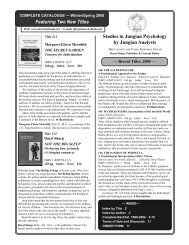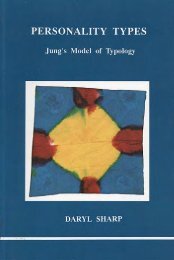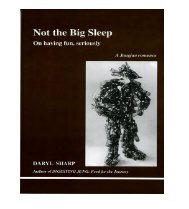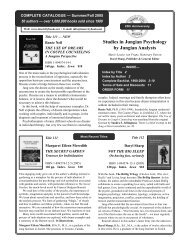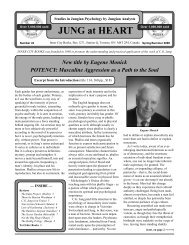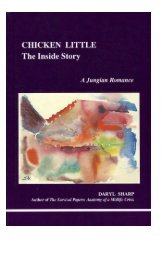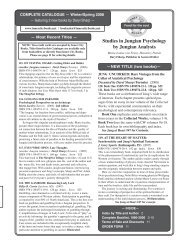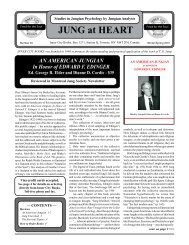Digesting Jung: Food for the Journey - Inner City Books
Digesting Jung: Food for the Journey - Inner City Books
Digesting Jung: Food for the Journey - Inner City Books
Create successful ePaper yourself
Turn your PDF publications into a flip-book with our unique Google optimized e-Paper software.
108 Bringing Fantasies into Life<br />
nothing of <strong>the</strong> sort occurred, I reflected that <strong>the</strong> “woman within me”<br />
did not have <strong>the</strong> speech centres I had. And so I suggested that she<br />
use mine. She did so and came through with a long statement.<br />
Intrigued by <strong>the</strong> fact that a woman could interfere with him from<br />
within, <strong>Jung</strong> concluded that she must be his “soul,” in <strong>the</strong> primitive<br />
sense of <strong>the</strong> word, traditionally thought of as feminine.<br />
I came to see that this inner feminine figure plays a typical, or archetypical,<br />
role in <strong>the</strong> unconscious of a man . . . . I called her <strong>the</strong> “anima.”<br />
The corresponding figure in a woman I called <strong>the</strong> “animus.”<br />
<strong>Jung</strong> also realized that by personifying that inner voice he was<br />
less likely to be seduced into believing he was something he wasn’t<br />
(i.e., an artist). In effect, he was writing letters to his anima, a part<br />
of himself with a viewpoint different from his conscious one. And<br />
by writing out, or sculpting, his fantasies, he gave her no chance “to<br />
twist <strong>the</strong>m into intrigues”:<br />
If I had taken <strong>the</strong>se fantasies of <strong>the</strong> unconscious as art, <strong>the</strong>y would<br />
have carried no more conviction than visual perceptions, as if I were<br />
watching a movie. I would have felt no moral obligation towards<br />
<strong>the</strong>m. The anima might <strong>the</strong>n have easily seduced me into believing<br />
that I was a misunderstood artist, and that my so-called artistic nature<br />
gave me <strong>the</strong> right to neglect reality. If I had followed her voice,<br />
she would in all probability have said to me one day, “Do you imagine<br />
<strong>the</strong> nonsense you’re engaged in is really art? Not a bit.” 106<br />
The object of active imagination, <strong>the</strong>n, is to give a voice to sides<br />
of <strong>the</strong> personality one is ordinarily not aware of—to establish a line<br />
of communication between consciousness and <strong>the</strong> unconscious. It is<br />
not necessary to interpret what <strong>the</strong> material “means.” You do it and<br />
you live with it. Something goes on between you and what you create,<br />
and it doesn’t need to be put into words to be effective.<br />
106 Ibid., Find



